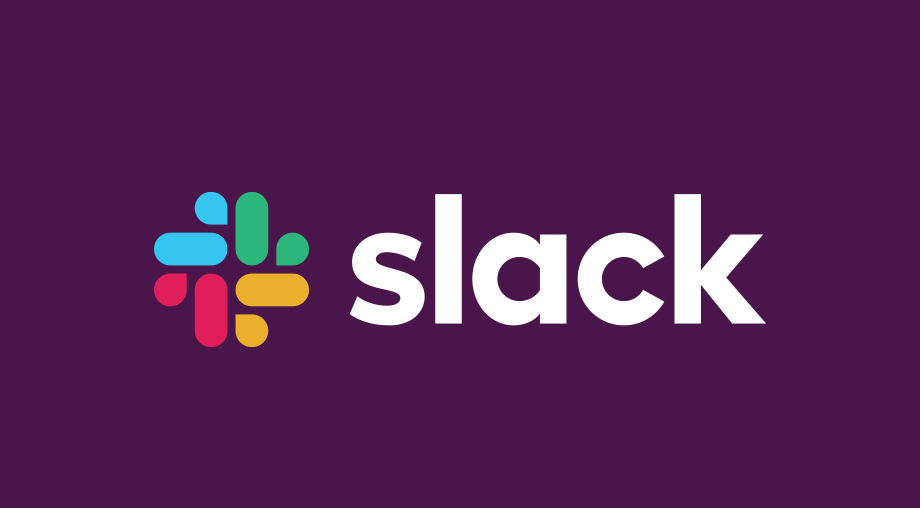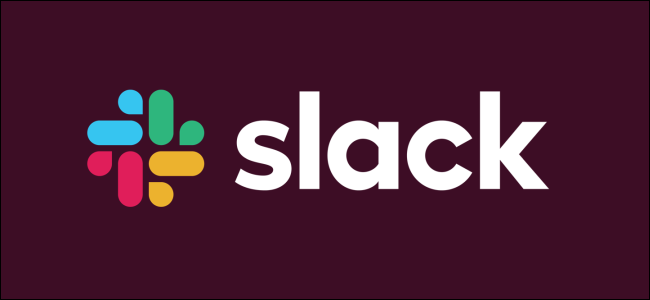Stewart Butterfield: The Visionary Behind Flickr and Slack’s Success

I am a law graduate from NLU Lucknow. I have a flair for creative writing and hence in my free time work as a freelance content writer.

I am a law graduate from NLU Lucknow. I have a flair for creative writing and hence in my free time work as a freelance content writer.
When the pandemic struck in early 2020, Zoom Chat was a relatively unknown startup. However, at the height of the crisis, when people stranded at home turned to video conferencing for communication, Zoom reported triple-digit sales growth. Zoom also offers Zoom Chat, a service that is somewhat comparable to Microsoft Teams and Slack. Along with a number of other useful enhancements for the collaboration software, Zoom announced a tiny modification to the product’s name, which is now Zoom Team Chat.
In an effort to compete with rivals like Microsoft’s Teams Zoom Video Communications Inc. announced on Monday that it has rebranded its chat platform and added additional functions, including third-party connectivity. To make teamwork more convenient, the updated program combines chat, third-party integrations, file sharing, video, voice, and a whiteboard in one location, according to a blog post by Zoom.

The
most recent updates will make it simpler to switch from a chat to a
video or phone call or to share an idea via a whiteboard. According
to experts, Zoom has added “Team” to its chat product since
consumers were confused about how the chat component in Zoom meetings
differed from the premium communication tool. This item acts as an
all-in-one platform, providing comprehensive capabilities to
encourage teamwork.
The head of product at Zoom Team Chat, Sharvari Nerurkar, claimed in a chat with The Verge that users encounter friction when they must switch between several different platforms in order to communicate with the same set of individuals. Zoom Team Chat is designed to be a single center for collaboration where you can communicate with coworkers asynchronously via text chat or in real-time via calls.
By the end of the month, Zoom hopes to roll out a few new features to improve the overall experience of actually utilizing zoom chat. The ability to share in-meeting chat directly into Zoom Team Chat is one addition that will make it simpler to read any crucial notes after the meeting has ended. If you’re having a text exchange that might benefit from a call, you may also schedule a Zoom conference directly from a Zoom Team Chat channel.
With
this update, Zoom is attempting to take a stand in a market that is
quite crowded.
Google, Slack, and Microsoft among others, are all quickly developing their own professional communication technologies to help enterprises in adapting to hybrid work environments, putting a lot of pressure on Zoom.
Although
Zoom Team Chat has been improved, it may be challenging for the
company to convince companies to switch from their current platforms
to Zoom Team Chat. As demand declines from epidemic highs, Zoom
lowered its annual revenue and profit predictions last month.
Zoom Team Chat is a feature of Zoom One, the company’s all-inclusive communication package, which also comprises Zoom Meetings with up to 300 participants, Zoom Whiteboard, and 5GB of cloud storage. Zoom’s chat product never really enjoyed the same level of attention as Zoom’s video meeting capabilities so far, but the company wants that to change through this move.
Eric Yuan founded Zoom in 2011 and released its software in 2013. Zoom’s revenue growth and the software’s perceived usability and dependability led to a $1 billion valuation for the business in 2017, establishing it as a “unicorn” company. In 2019, the company achieved profitability and successfully completed an IPO.

I am a law graduate from NLU Lucknow. I have a flair for creative writing and hence in my free time work as a freelance content writer.
Ending 2020, after the holiday week, people in the United States went on to work again on Monday. But the Monday did not go very smoothly for the office messaging company Slack, as it faced an outage on the very day.
Slack is an office messaging and communication platform, developed by an American software company Slack Technologies. The app is used for sharing information, chatting, voice and video calls, transferring documents by thousands of users and companies. It has been providing its services since 2013 and has become the first choice of many companies for establishing a private network of communication for their office staff and clients. The company has also seen a hike in the number of users during the Pandemic.
Slack went down at around 10 AM ET on Monday, and the users started reporting about the problem. There were issues with sending messages, loading the channel, making calls, transferring files, and many of the users even reported that they could not log in to their slack accounts. During the outage, the calendar on Slack as well as the notifications was also not working.

By 10:14 AM, the company also confirmed that the app was facing some issues, and later, it also acknowledged that an outage had occurred. “Customers may have trouble loading channels or connect to Slack at this time. Our team is investigating and we will follow up with more information as soon as we have it. We apologize for any disruption caused”, the company updated, “The problem remained for about more than two hours, and after that, the platform started working fine for some of the users at about 12:20 PM. But many of the users were still facing the interruption. The company also continued to update its official Twitter account with information regarding the problem. “
All hands are on deck on our end to further investigate,” one of its tweets said.”At 3:10 PM, the company tweeted, “We’re truly sorry for the disruption today. We’ll be back with a summary of this issue.”
In the pandemic, the companies were heavily relying on the various messaging and video conferencing apps, including Slack, Zoom, Google, etc. This might also be a reason that those platforms were facing such issues. Last year, in the mid of December, Gmail from Google also faced a similar blackout for some time, where users were continuously getting some error messages. This outage encouraged users to shift from one platform to the other so that they could complete their work on time. But since these apps recovered in a few hours, users could use them again.
But those issues are not permanent, as these companies are continuously working towards improving their tools for the users. Recently, the American cloud-based software company Salesforce announced to buy Slack for an amount of $27.7 billion (roughly Rs. 2,03,400 crores) and adding more features and tools to the platform. The company also revealed that it will be merging the Slack messaging technology to its platform so that users can manage the marketing and sales teams from a single platform.
After the big-blown outage, reportedly, Slack is working perfectly smooth now. “Seeing improvements with error rates on our site, and we believe affected customers should be able to access Slack,” said a spokesperson of Slack. Though thousands of people reported the issue with the platform, the company hasn’t given any figures or number of how many users faced the disruption.

Yashica is a Software Engineer turned Content Writer, who loves to write on social causes and expertise in writing technical stuff. She loves to watch movies and explore new places. She believes that you need to live once before you die. So experimenting with her life and career choices, she is trying to live her life to the fullest.
On Tuesday both Salesforce and Slack confirmed the acquisition of the latter for $27.7 billion by the software company Salesforce. This acquisition will mark one of the biggest business deals in the software industry and also the biggest in the history of Salesforce to date. Salesforce is a cloud computing giant which after owning the new work-chat app will amplify the working connectivity globally. The company will have a better shot at giving tough competition to the tech giant Microsoft.
Salesforce was one of the earlier companies in the IT industry to sell software in the form of subscription service. This saved many small companies and individual workers the time to install the programs on PCs. But, the concept of the software subscription is not a unique idea anymore. Many companies especially the big tech giants are making such online services with lucrative packages to offer, for example, IBM and Microsoft. So, what’s Salesforce’s plan in the long run?
Slack is an application used for messaging on a professional level. It is mostly used to enable communication among a group of people (especially workplace teams) which offers more than just one-to-one chatting service. Unfortunately with Microsoft Teams into Office 365, the demand for Slack was pulled down. In July, Slack launched a complaint against Microsoft in the European Union for illegally offering Teams in Office 365 subscription. And, customers will rather prefer a subscription where they are offered more than one service and everything is connected to ease the workflow. On top of this, some of the main products of Salesforce are in tough competition with Microsoft’s to stay afloat in the market. So, what is better than making a deal to make the company bigger and better?

The experts can see clearly that for Salesforce the main target is to outrun Microsoft as the latter is moving far ahead of Salesforce in terms of cloud computing. Marc Benioff, CEO and founder of Salesforce said that “Slack is a central nervous system for so many companies” and that “it’s a match made in heaven”. But, if it is only about outrunning Microsoft not every decision of the company might be fruitful.
Salesforce is paying Slack $27.7 billion to close the deal. Under the agreements for this acquisition, the Slack shareholders will get $26.79 in cash and 0.0776 shares of Salesforce common stock for each share of Slack. And, this calculation gives an entire value of $27.7 billion according to the November 2020 closing price of Salesforce’s common stock. March believes that this acquisition and what it will lead to will become the future of enterprise software. And, as the entire world is now getting accustomed to the work-from-home habit, the two companies might have hit the jackpot after all.
Stewart Butterfield, CEO of Slack, believes that with every passing day enterprise software is becoming the core of any organization. So, to build products and services with less complexity, more flexibility, proper alignment, and organizational agility is the main goal. He also said that he believes this is the most strategic decision in the history of software.
It has been over two decades that Salesforce is providing computing solutions to customers around the globe. The company has achieved massive success and recently it is also expanding its business by several acquisitions. The company bought a data analytics specialist for $15.7 last year. The current market value of Salesforce is approximately $220 billion which is around seven-folds greater than it was almost a decade ago. Kate Leggett, an analyst predicts Salesforce made a very positive acquisition as Slack will be added to its software suite giving people a similar experience like Office 365. If there are no hiccups in the way, Salesforce will take full control of Slack by mid-2021.
Though Slack is a very handy alternative for email and other online communication, it is not as popular as it was expected to be. It is used by many companies and government agencies but not a hot deal for the investors. So, by selling it to one of the leading software companies in the world, Slack just made a perfect exit embarking on a new journey. With Slack being acquired now it will have a broad customer base of the Salesforce and attract new customers as well for the company.

Annasha Dey is an NIT student, who apart from studying engineering is also a content writer. She has a great interest in photography, writing, reading novels, and travelling as well. She is a foodie who loves socializing and hanging out with her friends. She is also a trained Kathak dancer and a big fashion enthusiast. Dey also loves watching TV series, which includes F.R.I.E.N.D.S. and Big Bang Theory. To be a better writer she prefers to read more
Slack’s mobile applications are now trying to duplicate a desktop or browser experience by using a single home screen. The company is also working on improving its swipe-based navigation. However, a new update, which will roll out on an Android Beta channel, will try to do away with these cumbersome issues. The latest beta version aims to create a more straightforward and more user-friendly app that introduces significant interface changes.
Without a doubt, the most significant change the update will bring is a new navigation bar that will allow users to switch between sections. Such a bar, which will be at the bottom of the page, will enable users to move between sections without excessive swiping. Also, it makes it easier to scan through menus and read chats with ease in the beta version. The bar will also have a home screen button, which will showcase all channels on your device. When on this screen, you can swipe right to go to your other workspaces, and left, if you wish to backtrack to the last channel you visited. Near the home tab, there will be a DM tab to help you access your private message tab.
Also, the bar will have a Mentions tab that enables you to organize your activity session, which used to be hard to get to in the older versions of the app. The last tab on the right will take you to your profile, and will serve as a You tab. Furthermore, the new compose tab will help you start new chats with people via DM. These new upgrades will significantly help with improving Slack’s Android user experience. The app was notorious for burying features and limiting ease of access to vital functions via drop-down menus and options.
The cluttered sidebar, which was notorious for making remote collaboration more robust, has been improved to make it easier for users to find and join new channels. Furthermore, the addition of a new drag and drop option also makes it easy to group channels and conversations into sections that can collapse when needed. Users can also easily access files, apps, reactions, and mentions from the bar perched on top of the search bar.
The new Compose DM button also makes it easier for users to draft a new message when something comes up urgently, as you get to prepare the message and then attach a recipient to it. The latest update will also make it possible for users to drag, drop, and group channels, folders, and DMs into customizable sections. However, this feature will be available only to customers who pay to use the app, and not for the freeware users. Additionally, there will be a new lightning bolt button, which will be put next to the message field to allow users to open a new app or utility tool when required.
In the current beta version, you can access the channel list via the workspace icon, which is present on the upper-left corner of the screen. Another way to do this is to swipe left, in case you do not use the new Q gesture system, which has changed the gesture system tremendously. The DM tab and workspace are buried below layers of buttons and swipes, with them coming out only after you swipe to bring it out. However, ease of use has not changed drastically when you look at Slack on iOS.
The iOS update does not have a navigation bar, though it does come with better swiping options, which allow users to access more parts of the application. Therefore, it is safe to say that the new updates will help make Slack more user-friendly and fast. Once people get used to the new interface, they will find it a lot simpler and efficient. However, we are still not sure when Slack will come out with a public and final version of this update, and whether it will carry additional changes as well.
Whatever might be the case, the changes that have been discussed by the app are welcome ones, which users will definitely appreciate and encourage! In case you want to switch to the version anyway, you can download the Beta version from the PlayStore.

Being a cinephile with a love for all things outdoorsy, Athulya never misses a chance to chase inspiring stories or poke fun at things, even when the subject is herself. Currently pursuing a degree in mechanical engineering, she is someone innately interested in technical and scientific research. Music reviews and op-eds define her as they allow her to explore different perspectives. Though sometimes she thinks she makes more sense playing the guitar than she does while writing.